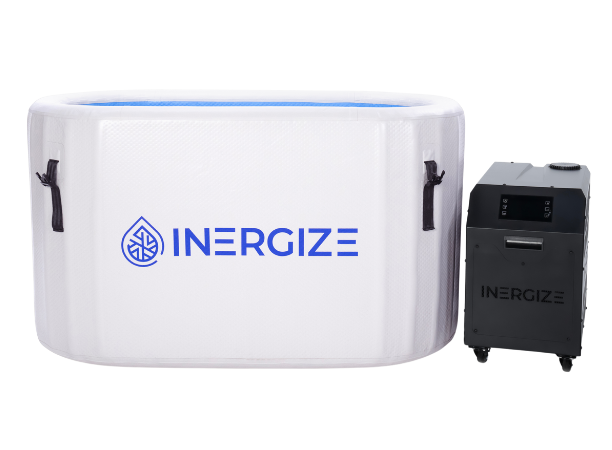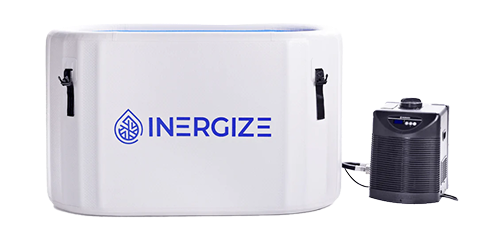Cold Plunge Benefits for High Blood Pressure

High blood pressure, also known as hypertension, affects millions of people worldwide and is a major risk factor for heart disease, stroke, and other serious health conditions. Managing high blood pressure often involves lifestyle changes, medication, and stress reduction techniques. However, one increasingly popular method for supporting cardiovascular health and managing high blood pressure is cold plunging—immersing the body in cold water. In this article, we explore the potential benefits of cold plunging for individuals with high blood pressure and how this practice may contribute to better heart health.
Understanding High Blood Pressure
What Is High Blood Pressure?
High blood pressure occurs when the force of the blood pushing against the walls of your arteries is consistently too high. This extra pressure can cause damage to the blood vessels over time, leading to heart disease, stroke, and kidney issues. Hypertension can be caused by several factors, including poor diet, lack of physical activity, stress, and genetics.
Risks Associated with Hypertension
If left untreated, hypertension can lead to a range of serious health complications, such as:
- Heart Disease: Overworking the heart can lead to heart attacks, heart failure, and other cardiac problems.
- Stroke: High blood pressure increases the risk of stroke by damaging and weakening the brain's blood vessels.
- Kidney Damage: Hypertension can harm the arteries around the kidneys, impairing their ability to filter blood.
Managing blood pressure is critical to preventing these health issues, and cold plunging could be a complementary strategy to achieve this.
How Cold Plunging Affects Blood Pressure
Immediate Effects of Cold Exposure on Blood Vessels
When the body is immersed in cold water, it reacts by vasoconstriction, meaning the blood vessels constrict or narrow. This is a natural survival response to keep blood flowing to essential organs and maintain core body temperature. During this initial phase, blood pressure may temporarily rise due to the constriction of blood vessels. However, this is followed by another key phase: rebound vasodilation.
Rebound Vasodilation After Cold Exposure
After exiting the cold plunge, the blood vessels expand (vasodilation) to restore normal blood flow. This relaxation of the blood vessels helps to reduce overall blood pressure. Regular cold exposure trains the cardiovascular system to become more efficient at contracting and relaxing blood vessels, which can lead to long-term improvements in blood pressure control.
Hormonal Impact
Cold exposure triggers the release of norepinephrine, a hormone that can reduce stress levels and support healthy blood pressure. It also helps to lower cortisol, the stress hormone linked to high blood pressure, promoting an overall state of relaxation and balance in the cardiovascular system.
Benefits of Cold Plunging for High Blood Pressure
1. Improved Circulation
One of the primary benefits of cold plunging is improved circulation. The alternating cycle of vasoconstriction (during cold exposure) and vasodilation (afterwards) improves blood flow throughout the body. Over time, this can help lower resting blood pressure and support a healthier cardiovascular system.
- How It Works: Cold water immersion causes the blood vessels to constrict and then relax, which strengthens the walls of the vessels and helps improve overall circulation.
2. Reduction in Stress and Anxiety
High levels of stress and anxiety are common contributors to high blood pressure. Cold plunging is known to have a calming effect on the nervous system, helping to reduce the production of stress hormones like cortisol. By lowering stress levels, cold plunging can indirectly lower blood pressure as well.
- Cold Therapy and Mental Health: Studies have shown that cold exposure increases the release of endorphins and norepinephrine, which not only improve mood but also lower stress and anxiety levels.
3. Enhanced Cardiovascular Health
Regular cold plunging can strengthen the cardiovascular system. By training the blood vessels to constrict and relax more effectively, cold exposure improves the elasticity of the arteries and promotes healthier blood flow. Over time, this can result in lower resting blood pressure and improved heart function.
- Cardiovascular Conditioning: The repeated cycles of cold exposure stimulate and strengthen the cardiovascular system, much like exercise, making the heart and blood vessels more resilient to stress.
4. Supporting Weight Management
Cold exposure activates brown fat, a type of fat tissue that burns calories to generate heat. This process, known as thermogenesis, can boost metabolism and support weight management efforts. Since maintaining a healthy weight is crucial for controlling high blood pressure, regular cold plunging can indirectly contribute to lowering hypertension.
- Boosting Metabolism: Cold exposure increases energy expenditure, helping the body burn fat and maintain a healthy weight, which can further reduce the strain on the heart and blood vessels.
Scientific Evidence Supporting Cold Therapy for Hypertension
Studies on Cold Exposure and Blood Pressure
Several studies have examined the relationship between cold exposure and blood pressure. Research published in the Journal of Hypertension suggests that regular cold water immersion can improve vascular function and contribute to a reduction in blood pressure over time. Other studies have found that cold exposure reduces the risk of cardiovascular diseases by enhancing arterial flexibility and lowering blood pressure.
Expert Opinions
Many cardiovascular specialists agree that cold therapy can be a useful complementary approach for managing blood pressure. Dr. Michael Joyner, a researcher at the Mayo Clinic, notes that the stress-reducing benefits of cold exposure can help lower blood pressure by calming the nervous system and improving the body's natural stress response.
Safety Considerations for Cold Plunging with High Blood Pressure
Consult with a Doctor
If you have a history of high blood pressure or any other cardiovascular condition, it’s essential to consult with your doctor before starting cold plunging. While cold exposure can offer benefits, it's important to ensure it’s safe for your specific health condition.
Start Slowly
Cold exposure can be intense, especially for beginners. It’s important to start slowly, with shorter plunges of 1-3 minutes at temperatures between 50°F and 59°F. As your body adapts, you can gradually increase the duration of your cold plunges.
Monitor Your Blood Pressure
Keep a close eye on how your body responds to cold plunging. Regularly monitor your blood pressure before and after your sessions to ensure it remains within a healthy range. If you notice any negative effects, such as dizziness or an abnormal rise in blood pressure, stop immediately and consult a healthcare professional.
How to Incorporate Cold Plunging into Your Routine for Blood Pressure Management
Frequency of Cold Plunging
For individuals looking to manage blood pressure, cold plunging 2-3 times per week is generally sufficient. Regular exposure helps the body adapt to cold conditions, providing long-term benefits to the cardiovascular system.
Best Practices
- Start with Short Sessions: Begin with cold plunges lasting 1-3 minutes and gradually increase the time as your body adapts.
- Choose the Right Temperature: Aim for water temperatures between 50°F and 59°F for optimal blood pressure benefits.
- Stay Consistent: Consistency is key for seeing long-term improvements in blood pressure. Make cold plunging a regular part of your weekly routine.
Conclusion
Cold plunging offers a wide range of benefits for individuals with high blood pressure. By improving circulation, reducing stress, and supporting cardiovascular health, cold plunging can be an effective complementary approach to managing hypertension. However, it’s important to approach cold therapy carefully, consulting with a healthcare professional and starting slowly to ensure it’s safe for your specific health needs.
Ready to incorporate cold therapy into your routine to help manage blood pressure?
- Explore Inergize Health’s Cold Plunge Solutions: Discover our range of high-quality cold plunge tubs designed to provide the best cold therapy experience.
- Get Personalized Advice: Contact us through our Contact Page for expert guidance on cold plunging for health and wellness.
- Learn More: Visit our Blog for more information on cold therapy and its benefits for overall health.
Take control of your blood pressure with the power of cold therapy from Inergize Health!







